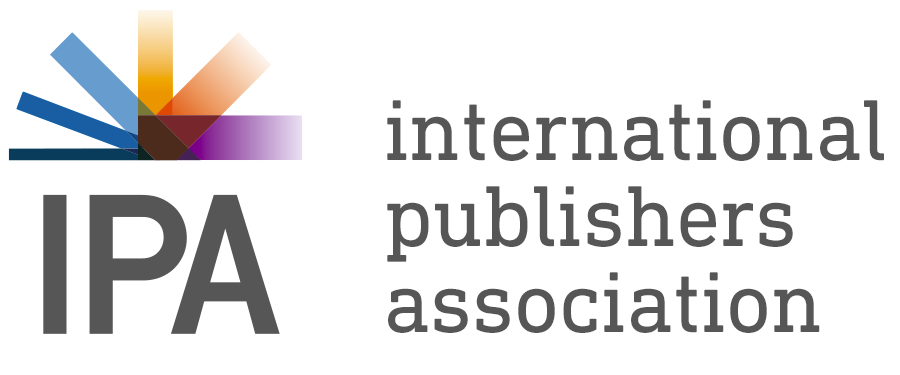Earlier this month, the Pride season arrived in my hometown Amsterdam where Elsevier is also headquartered. Two weeks of events to celebrate Pride but also a moment of protest as the LGBTIQ+ community is increasingly under attack globally. We started with a Pride Walk where many Elsevier colleagues joined. Earlier this month we participated in the London Pride Parade and our CEO Kumsal Bayazit also took part. Visibility is important, today more so than ever before.
This raises the question: how is the LGBTIQ+ community doing in the global publishing industry? Data is sketchy but for some countries there are nuggets to explore and often IPA members can take credit.

But let’s start on some demographics as the LGBTIQ+ community is dynamic and ever changing. In the US today 7.2% of the adults identify as LGBT (lesbian, gay, bisexual, transgender) or something other than heterosexual, which is double the percentage from a decade earlier, so enormous growth. There are massive generational differences: of Gen Z 19.7% (one out of 5!) identifies as LGBT while that percentage drops from 19.7% to 1.7% for people born before 1945. Of that high percentage for Gen Z 13.1% is bisexual, by far the largest percentage among the LGBT identities. More international 2023 data from 30 countries, covering many IPA members, show that on average 9% identifies as LGBT+.
2019 data for the US publishing and book sector showed that 19% identified as non-heterosexual (of which 10% are bi- or pansexual), which is considerably higher than the general population. This is in line with the 2019 Lee and Low survey which also showed that the data is substantially different for interns, who are typically Gen Z: 49% non-heterosexual of which 30% bi- or pansexual.
Over to the UK where the IPA’s member, the UK Publishing Association, has put Diversity & Inclusion (D&I) squarely on its agenda for many years, together with a sustained year-on-year survey among UK publishers. 2022 data shows that LGBT+ representation has increased to 15% (up from 13% in 2021) compared to 3% UK national average. This figure has grown each year since the first survey in 2017 when the LGBT+ share was 5% of the workforce – a remarkable three-fold increase in 5 years. Of the 2022 LGBT+ share of 15%, 8% identify as bisexual.
The comparison of the LGBT+ data within our industry and the national average is an interesting one, but does it tell the whole story? Publishing houses are typically in large cities such as New York or London where the LGBT+ population is higher than nationally. Census data shows that in London 4.3% identifies as LGBT+, but there are London districts where this number can easily double. Still both the US and UK data point towards a strong representation of members of the LGBTIQ+ community in the publishing industry, much higher than the national average and also above the big city average.
Why is this level of diversity important? In addition to the moral imperative that our workplaces should be welcoming to everyone, including the LGBTIQ+ community, there is also a strong business case: businesses that embrace diversity perform better, not only financially but they also take better decisions, they are more innovative and creative. This applies to diversity in general but even more so to LGBTIQ+ diversity: one could consider the LGBTIQ+ community the pink canary in the D&I coalmine!
Representation is important but is separate from inclusion or a sense of belonging. However earlier UK PA surveys also covered if respondents are out at work and if so to whom – this could give us an indication of inclusion. While most LGBT+ respondents are out to their immediate colleagues, that percentage dropped significantly for their managers or other colleagues higher up in the organization. Apparently there were reasons to hide one’s sexual orientation or gender identity to colleagues outside one’s immediate circle of peers. A recent global study by Deloitte (not specifically for the publishing industry) gave the following reasons for not coming out at work: worry about being treated differently (46%), worry it will affect career opportunities (30%), worry about personal safety (26%). Interestingly in the UK PA survey there was also a small group who was out at work but not out at home – in this case the safe space is at work and not at home.
Any discussion about D&I cannot cover only the people we employ in our publishing houses but should also cover D&I in our publications. It is of course very encouraging that more and more inclusive books are published and more inclusive themes are covered, including LGBTIQ+ themes. But this is not without controversy (and on its own a great subject for another blog): e.g. together with race & ethnicity, the LGBTIQ+ themed books are leading the charts of banned books in the US. The two most banned books are “Gender Queer: A Memoir” by Maia Kobabe (the title is self explanatory); and “All Boys Aren’t Blue” by George M. Johnson (which is about a black queer person).
Hopefully the publishing industry with its strong representation from the LGBTIQ+ community and its core values of freedom to publish and freedom of expression, as well as its inclusive and diverse outlook, can inspire the fight against book bans and censorship while pursuing a broader agenda of diversity and inclusion. Considering the generational shift with an even higher queer representation to come I can only be optimistic. I salute the IPA members that started surveying D&I in their countries, illustrated by the examples from the US and UK above, and hope that many more IPA members will follow suit. Reliable data is a crucial cornerstone to any D&I strategy. Happy Pride everyone!

